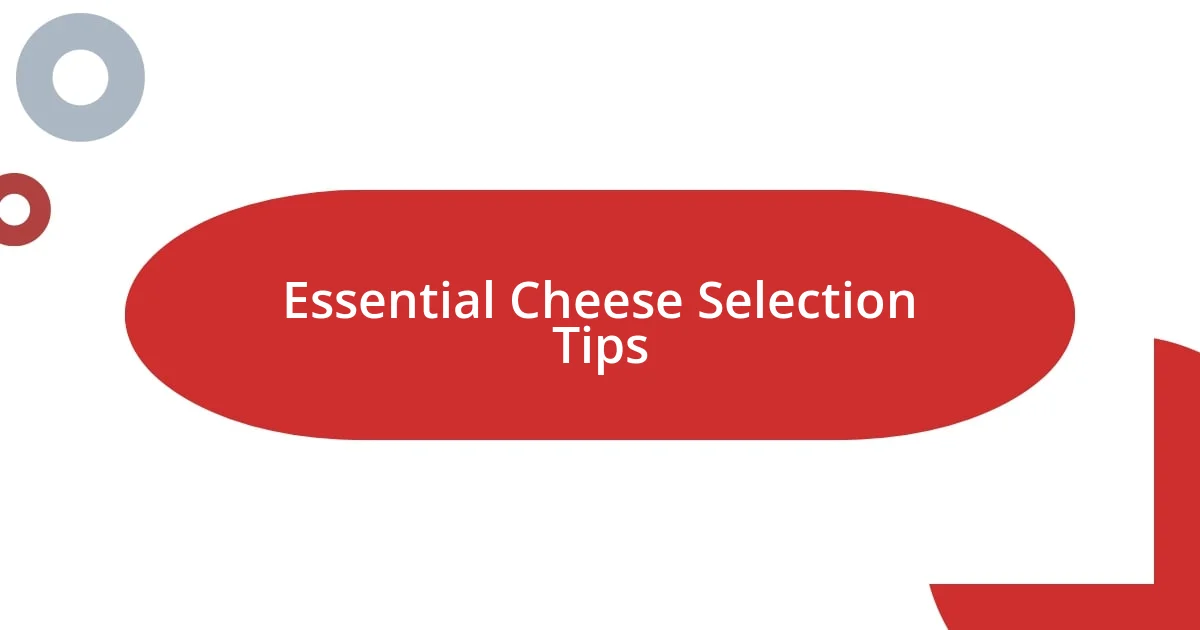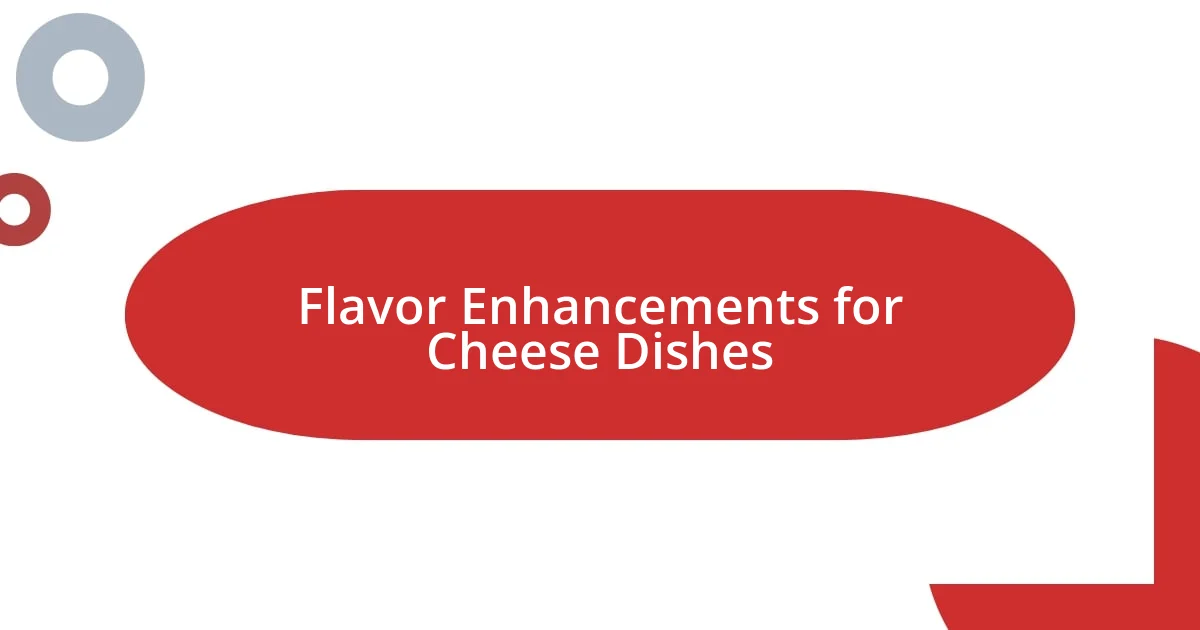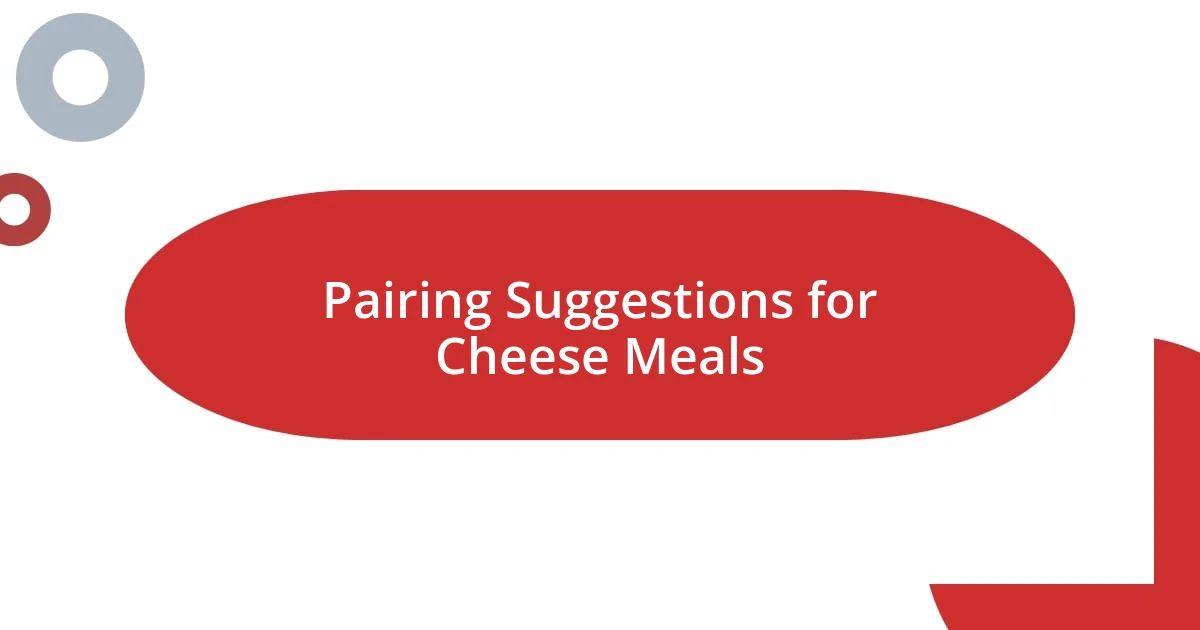Key takeaways:
- Cheese transforms dishes by enhancing flavors, with careful selection based on the recipe’s needs playing a crucial role.
- Creative cheese recipes, such as baked brie and blue cheese salads, highlight how simple ingredients can lead to extraordinary dishes.
- Presentation and pairing of cheese with fruits, wines, and spices greatly elevate the dining experience and flavor profiles.

Introduction to Cheese Transformations
Cheese has this incredible ability to evolve, transforming from its original form into something uniquely delightful. I remember the first time I tried a three-year-aged cheddar; it was like a revelation! The intensity and complexity of flavors were so different from the mild cheese I’d always known. Can you relate to that moment when you discover a new flavor profile that changes everything?
Think about it: cheese isn’t just a standalone food; it has the remarkable power to enhance dishes, turning simple recipes into gourmet experiences. I often find myself experimenting with different cheeses in my cooking – a sprinkle of creamy goat cheese here, a chunk of aged gouda there. Each transformation seems to bring out new layers of flavor, sparking a joy in cooking that I didn’t know existed.
As I delve deeper into cheese transformations, I realize it’s not just about taste; it’s about exploration. Have you ever noticed how a simple cheese can instantly elevate a dish’s appeal? From melting mozzarella on a pizza to the sharpness of blue cheese in a salad, the diverse applications of cheese can create delightful surprises that awaken our palates and redefine our culinary boundaries.

Essential Cheese Selection Tips
When selecting cheese, it’s important to consider both flavor and texture. I still remember one of my early cheese shopping trips when I accidentally mixed up sharp and mild varieties. The result was a pizza that left my friends scratching their heads instead of savoring each bite! Finding the right cheese can truly make or break a dish, so I always keep these tips in mind:
- Consider the dish: Different cheeses complement various recipes. For instance, a creamy brie pairs wonderfully with fruits, while an assertive blue cheese shines in salads.
- Check the texture: Firm cheeses like aged Gouda are perfect for grating, whereas soft cheeses like ricotta can add a luscious finish to pasta.
- Explore regional varieties: Sometimes, local artisan cheeses can surprise you. On a recent trip to a farmer’s market, I discovered a tangy goat cheese that transformed my favorite pasta dish.
I also recommend tasting cheese before purchasing it if possible. One memorable experience was at a cheese shop where I sampled a robust Roquefort. The bold flavor was a game changer; it ignited a newfound love for blue cheeses in my culinary ventures. Trust your palate and don’t hesitate to ask for recommendations. Here are some more essential tips to enhance your cheese selection journey:
- Knowing your milks: Cheese made from cow’s milk is generally creamier, while sheep’s milk cheese can be more intense and complex.
- Aging matters: Fresh cheeses are milder, while aged varieties pack a punch. If you want to experiment, go for a cheese aged for at least a year.
- Watch the seasonality: Some cheeses truly shine at different times of the year. Spring brings fresh goat cheeses, while fall offers rich, nutty varieties perfect for cozy dishes.

Creative Cheese Recipe Ideas
I love delving into creative cheese recipes! One of my go-to transformations involves using brie in a baked dish. I remember hosting a cozy gathering and serving warm, gooey brie topped with honey and roasted nuts. The crowd went wild! It’s amazing how a simple heat and a drizzle of sweetness can elevate such a rich cheese into a stunning appetizer that draws everyone in.
Another favorite of mine is the playful combination of blue cheese and pears in a salad. The contrast between the sharp, tangy flavor of the cheese and the sweet juiciness of the pears brings a delightful balance. It reminds me of a picnic I had last summer, where every bite felt like a burst of flavors—and the best part was how easy it was to prepare! A quick visit to the farmer’s market for fresh ingredients, and suddenly you have a show-stopping dish that impresses effortlessly.
Experimenting with cheese can also lead to surprising new recipes. For example, I once used ricotta to create a creamy pasta sauce, blending it with fresh herbs and garlic. The joy of discovering that I could take a simple pantry staple and transform it into a restaurant-quality dish was unforgettable. Have you tried turning your leftovers into something new with cheese? It transforms mundane meals into something extraordinary and pushes the boundaries of creativity.
| Recipe Idea | Key Ingredients |
|---|---|
| Baked Brie | Brie, honey, roasted nuts |
| Blue Cheese & Pear Salad | Blue cheese, fresh pears, mixed greens |
| Ricotta Pasta Sauce | Ricotta, garlic, fresh herbs |

Flavor Enhancements for Cheese Dishes
When it comes to enhancing the flavor of cheese dishes, I find that adding ingredients that bring out contrasting flavors really makes a difference. For example, the unexpected zing of lemon zest paired with creamy goat cheese creates an extraordinary brightness. I remember once incorporating this combination into a cheese board for a gathering, and guests were raving about how the citrus notes lifted the richness of the cheese. It made me wonder—how often do we overlook the power of a simple twist of lemon to elevate our dishes?
Another technique I frequently use involves infusing aromatics into my cheese preparations. A few sprigs of fresh thyme or rosemary can completely transform a classic baked cheese dish. I still recall the aroma wafting through my kitchen when I added these herbs to a bubbling wheel of camembert. It felt like a sensory explosion that not only tantalized my taste buds but also created an inviting atmosphere for my dinner guests. Does your cheese have its own secret garden of flavors waiting to be uncovered?
Don’t forget about texture! Incorporating crunchy elements can enhance the overall experience of your cheese dishes. I often sprinkle toasted pine nuts on top of a cheese dip for added crunch and flavor. I had a delightful realization the first time I tried this; the nutty flavor paired with creamy cheese was a revelation, transforming an average dip into a standout appetizer! Have you ever thought about how texture affects the taste? It’s a game-changer!

Techniques for Cheese Melting
When it comes to melting cheese, it’s essential to pay attention to the type of cheese you’re using. For instance, I remember trying to make a queso dip with mozzarella once, hoping for that nice stretch. Instead, it turned rubbery! This experience taught me that cheeses with higher fat content, such as cheddar or gouda, melt beautifully and create that creamy texture we all crave. Have you ever been let down by a melting mishap? It’s definitely a learning curve!
The method of heating is just as crucial. I prefer using a double boiler for delicate cheeses like cream cheese or ricotta, as it allows for gradual heating without burning. Taking my time during the melting process not only yields a smoother sauce but also makes each bite more enjoyable. The thrill of seeing the cheese transform into a velvety mix reminds me of making my first cheese sauce from scratch. I can still feel that rush of excitement—there’s something almost magical about the way heat can create a luscious dip!
Lastly, I’ve found that adding a splash of liquid while melting cheese makes a noticeable difference. Whether it’s cream, milk, or even a splash of white wine, these additions help create a dreamy consistency that’s perfect for dipping. I once whipped up a simple fondue, adding a bit of crisp white wine to my melted swiss and gruyère mixture. The result? A delightful balance of flavors that elevated our cozy evening into a night to remember. Have you experimented with different liquids? They’re true flavor enhancers in the melting game!

Presentation Tips for Cheese Recipes
Presenting cheese dishes can be an art form that speaks volumes about your culinary skill. I’ve discovered that the way you arrange your cheese can turn an ordinary plate into a captivating centerpiece. For instance, when I crafted a cheese platter for a friend’s birthday, I used varying heights by stacking cheeses on different levels. It not only looked stunning, but it also drew people in, prompting them to explore and taste each delicious layer. Have you ever noticed how visual appeal can enhance the anticipation of food?
Color plays a crucial role in cheese presentation. I love incorporating fresh herbs, colorful fruits, or even edible flowers to brighten the dish. One memorable experience was when I hosted a wine and cheese night; I paired rich cheeses with vibrant strawberries and sprigs of mint, turning a simple cheese board into a festival of colors. It was fascinating to see guests light up as they appreciated both the taste and the vibrant aesthetic before them. Have you tried using color to elevate your dishes? It can be a game-changer.
Using the right serving tools can also elevate how cheese is presented. I’ve found that my cheese knives, with their varied shapes and sizes, not only help in cutting but also add an element of charm. When I served a creamy brie on a rustic wooden board with a special cheese knife, it instantly became a topic of conversation among my guests. They appreciated not just the cheese but the entire experience I created. What tools do you have that can enhance your own cheese gatherings? Every detail can contribute to a memorable culinary experience.

Pairing Suggestions for Cheese Meals
Pairing cheese with the right accompaniments can elevate any meal to new heights. One of my favorite pairings is a robust cheese like aged gouda with sweet fig jam. The first time I tried this combination, it was a revelation. The sweet notes of the jam complimented the nutty flavors of the cheese, creating a harmony that made my taste buds dance. Have you ever paired flavors that surprised you?
Wine is another classic companion to cheese. I’ve found that a crisp white wine, like Sauvignon Blanc, pairs wonderfully with fresh goat cheese. During a picnic last summer, my friends and I uncorked a bottle, and the refreshing acidity balanced the tangy cheese perfectly. Did you know that pairing cheese and wine can truly bring out hidden flavors in both? It’s a delightful experience that transforms an ordinary meal into something special.
If you’re feeling adventurous, don’t shy away from incorporating spices or nuts. I recall enjoying a creamy blue cheese sprinkled with crushed walnuts and a dash of honey at a cheese festival. The crunchy texture of the nuts contrasted beautifully with the cheese’s creaminess, while the sweetness tied it all together. It makes me wonder, have you ever experimented with adding unexpected elements to your cheese dishes? There’s a world of flavor awaiting your exploration!















